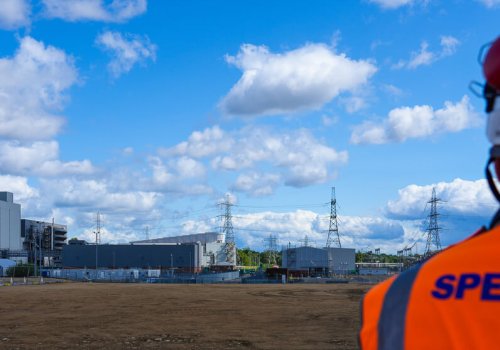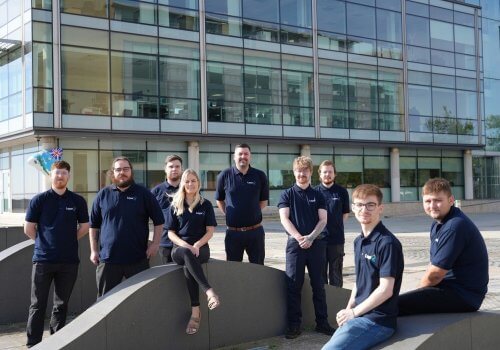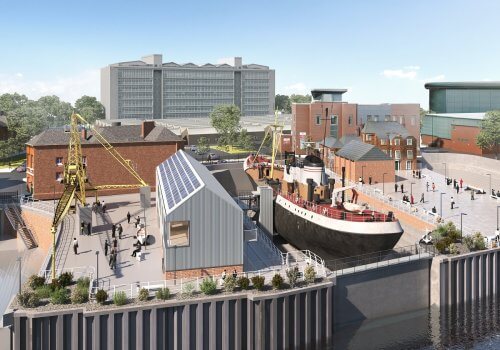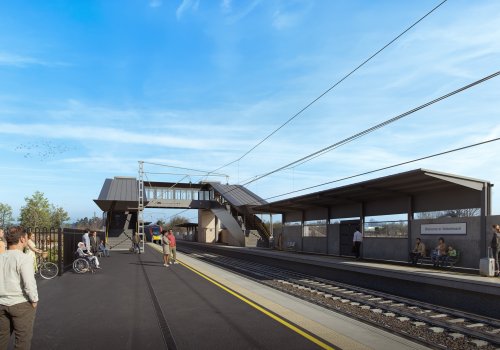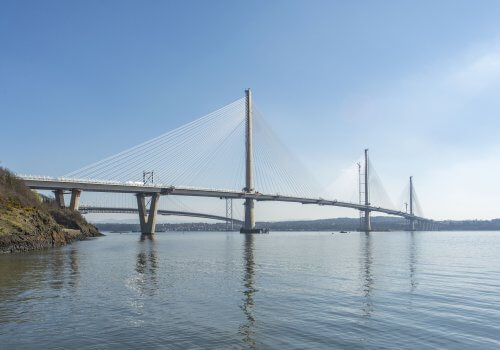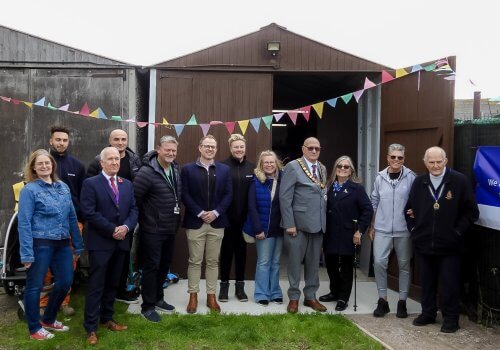Huge gantries are under construction to enable engineering specialists Spencer Group to carry out the world’s largest retro-fit suspension bridge dehumidification project.
The gantries are part of Spencer Group’s trademarked Cable Crawler system and are the largest yet built for work to enable prevention of corrosion to suspension bridge cables, for which the company has carved out a global reputation.
Four gantries, each 33 metres long, 4.5m high, 3.5m wide and weighing 22 tonnes, are 40 per cent bigger and heavier than any previously constructed for a Spencer Group bridge project and will cost a total of £1 million to design, construct and equip.
They are due to be shipped to Denmark in March 2014 for the work on the East Bridge, the third largest suspension bridge in the world, which is part of the giant Great Belt Crossing linking the eastern and western parts of the country.
The size of the gantries is directly related to the span of the East Bridge which, at 1.6km is 15 per cent longer than the Humber Bridge. Because of their size, the gantries are the first to be built in modular form, with each fabricated in two end sections and a centre section.
The sections will then be assembled together, the gantries painted and all electrical, hydraulics and hauling equipment pre-installed before shipping from the Port of Hull to the Danish port of Korsor, ready for the project to begin when weather allows in spring 2014. The gantries will be operational from as early as mid-March, with the project scheduled to be completed by the end of October 2014.
Hull-based Spencer Group pioneered the world-leading Cable Crawler system in 2007 when the company used it to allow high-level access for the dehumidification of cables on the Forth Road Bridge in Scotland. It has since been used on three other dehumidification schemes – on the M48 Severn Crossing; Humber Bridge; and the Alvsborg Bridge in Gothenburg, Sweden.
Because every suspension bridge has different dimensions, new gantries have to be fabricated or significantly modified for each bridge, although the modular design of the gantries for the Danish project opens up the opportunity for the end sections to be used again for other schemes.
The innovative traversing system enables the negotiation of bridge infrastructure without the need to return the gantry to the bridge deck. It eliminates traffic management after installation and has been designed to guarantee 100 per cent containment of personnel and tools.
Spencer Group Project Director Jim Mawson said: “The system has so many benefits. It is safe, because all personnel, tools and equipment are fully enclosed; it traverses easily along the cable without having to remove any part of the bridge infrastructure; and it is totally independent of traffic, allowing full, continuous use of the bridge while the system is in operation.
“We install each gantry at night in low traffic without any disruption to vehicle movements. The next day all traffic lanes are open and the gantry operates independently of traffic at all times and allows the bridge owners to keep all traffic lanes open. That is absolutely crucial to the bridge owners and is probably the biggest USP of the Cable Crawler system.
“Wherever they are, these bridges are vital parts of the transport and socio-economic infrastructure, so any disruption to traffic movements is controversial and potentially economically damaging. Our system removes entirely any concern about such impact.”
The dehumidification project has been initiated by the client, A/S Storebaelt, following testing of the main cables. Following other bridge owners, A/S Storebaelt has decided to install this widely accepted and proven protective measure to preserve their cables in excellent condition.
Spencer Group will wrap the main cables of the bridge in an elastomeric wrap known as Cableguard. As each section is wrapped, the Spencer team will use thermal blankets to heat the wrap and create a continuous airtight seal around the main cables.Plant rooms are then set up inside the deck box girder which take in air from the atmosphere, dehumidify it, and pump it inside lengths of the wrapped cables.
The dehumidified air absorbs moisture inside the cables, carrying it out to the atmosphere at an exhaust point further along the cable.The process is repeated until the entirety of main cables have been dehumidified, thus preventing corrosion and extending the life of the bridge.
Mr Mawson said the Cable Crawler system was unique in the world and gave Spencer Group a key competitive advantage in the worldwide market for suspension bridge inspection and dehumidification projects.
There are around 150 suspension bridges worldwide and all but the most recently constructed are likely to require dehumidification treatment to protect the cables, opening up a huge international market for such projects. Spencer Group is currently exploring opportunities as far afield as the United States, Canada, Turkey, Chile and Hong Kong.
Mr Mawson added: “Dehumidification is now recognised as the most cost-effective solution to prevent corrosion to main cables, as by retro-fitting it arrests corrosion and prevents further deterioration.
“It has been fully adopted in the UK and in Europe and, in the US, dehumidification has been employed on the first two bridges, the Bay Bridges in Maryland. Dehumidification is now firmly on the radar for bridge owners, but probably only 15 per cent of the bridges in the world that require this technology has had it applied as yet, so it is potentially a massive market globally.”
The gantries are being fabricated at the workshops of ESL GB fabrication engineers in Hull. Managing Director Paul Thompson said the project was the company’s largest ever in scale and value and 11 fabricators and welders were dedicated to it, four of them hired specifically for the job.
He added: “This is the biggest single job we have ever undertaken. We worked with Spencer on the original concept for the Forth Road Bridge, building the first gantry for them, and have worked with Spencer on every project since. We have gathered so much knowledge and experience as we have progressed.
“Quality is absolutely vital because the project is safety critical. It requires work of the highest specification and standard and that is what we do.”

